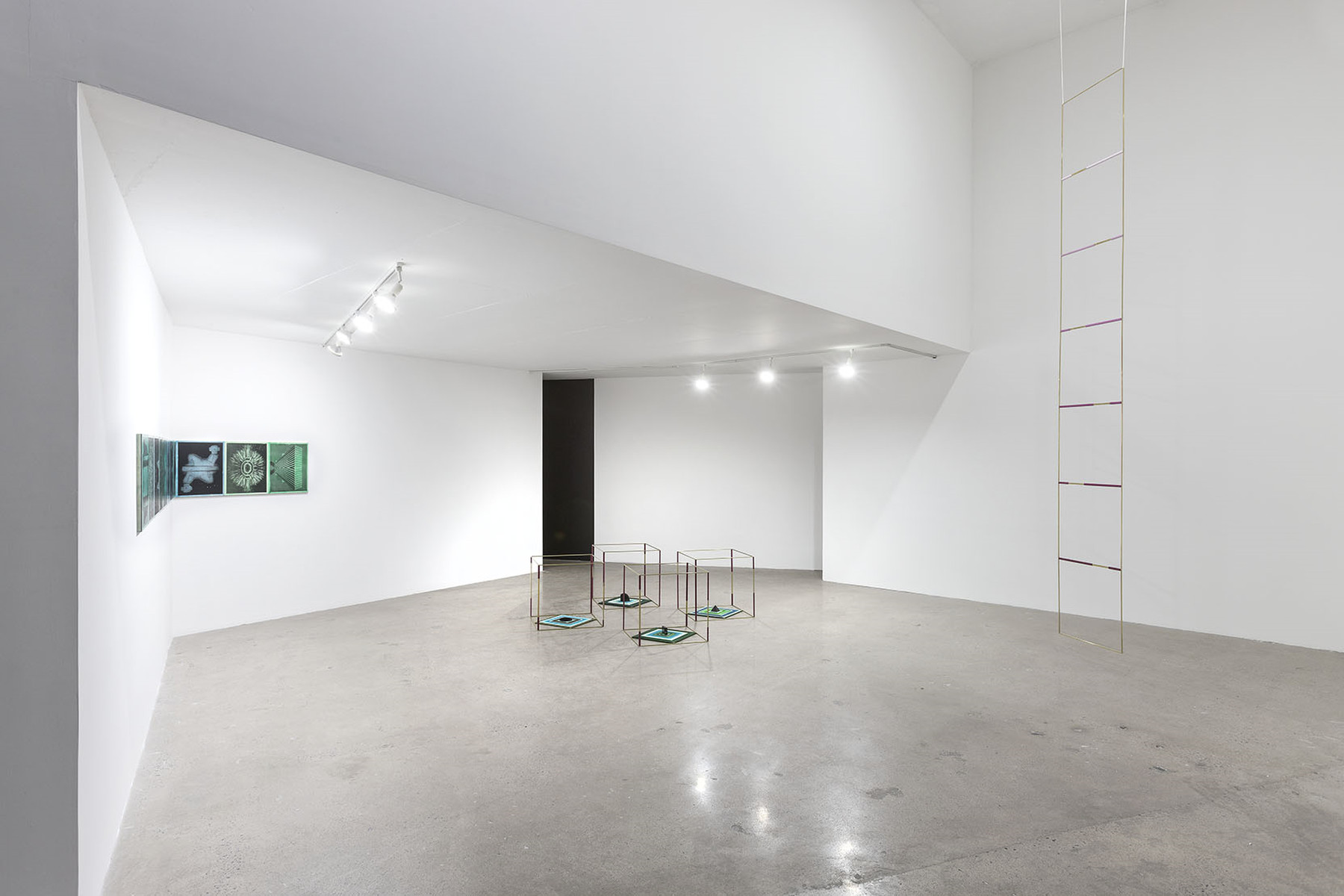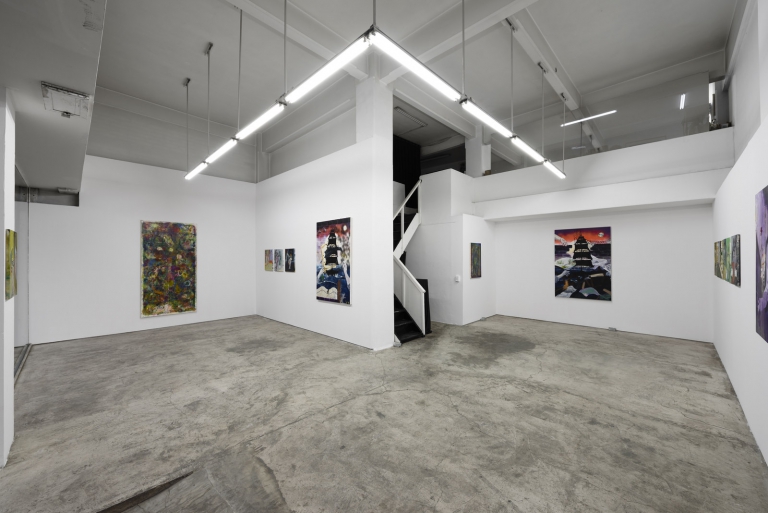Artist: Claudia Peña Salinas
Exhibition title: Tezcatlocan
Venue: CURRO, Zapopan, Jalisco, Mexico
Date: November 8, 2018 – March 1, 2019
Photography: all images copyright and courtesy of the artist and CURRO
C U R R O presents the first solo show of Claudia Peña Salinas (1975) in Mexico. In recent years, the artist has developed a significant body of work that reflects indigenous thought alongside modern and minimalist structures. Her practice, which includes sculpture, installation, painting, video, publications and photography, highlights the use of natural fibers, while at the same time relates to the symbols, colors and materials used by pre-Columbian peoples. Through processes of research, travel, dérive and collection, Claudia generates a personal narrative, both political and aesthetic, that reconnects her with her native country.
Since 2013, Claudia has begun working with topics related to the Aztec water deities Tláloc and Chalchiuhtlicue, leading to individual and collective exhibitions in Puerto Rico, Michigan, and more recently, at the W hitney Museum in New York . Her research takes as a starting point the monolith located at the entrance of Mexico City’s National Museum of Anthropology, commonly known as the “Tláloc”, the god of rain. The artist explores the origin and meaning of this cult, as well as the extraction of the monolith by the Mexican government to decorate the museum. Claudia focuses mainly on the debate with regard to the interpretation of the monolith and its possible iconographic identification with the female deity of water and fertility, Chalchiuhtlicue.
Tezcatlocan takes her research further by linking the symbolic element of the mirror (tezcatl in Nahuatl) with the earthly paradise of Tlalocan, ruled by the duality Tlaloc, god of rain and lightning; and Chalchiuhtlicue, goddess of horizontal waters and fertility. Among the inhabitants of Tlalocan, the domain of the dead by water, the tlaloques can be found: four small gods in charge of distributing the rain contained in jars. The tlaloques were also associated with the four cardinal points, which structure the vision of the Mesoamerican peoples on the universe, together with the notions of verticality and horizontality, related to the world, underworld and upper world.
Peña Salinas refers to these two conceptions of spatiality in Mesoamerica on her sculptures. She uses brass frames, joined by a pattern of cotton thread dyed by hand, generating a gradient of carmine tones. The hanging structure resembles a staircase, while the floor sculptures align with the four cardinal points, corresponding to each tlaloque. At the center of each cube is a textile design of concentric blue-green stripes, reminiscent of the God’s Eyes, a sacred geometry mainly used by the Wixárika people to symbolize, in addition to the four cardinal points, the elements of the natural world: earth, water, wind and fire.
Both the eye and the mirror have a symbolic tradition among the ancient inhabitants of Mexico. Manufactured from pyrite or obsidian, the prehispanic mirrors were a source of occult knowledge, oracles and omens. The name Tezcatlipoca, one of the four main Aztec gods, can be translated as smoking mirror, directly associated with this volcanic rock. The mirror effect is observed both on the surface of the water, on the reflecting capacity of the obsidian, as well as on the series of paintings — transfers on wax panel— displayed in the gallery. The images used for these (a jaguar, a crystal of hematite, Tlatelolco, Moctezuma’s headdress, the facade of the Hilton hotel in Acapulco, etc.) come from a collection of postcards that the artist has formed over the years. Claudia creates a new reproduction of these images, not through massive reprint, but with a process that combines the encaustic painting technique, the photocopy and the gestural work of transferring the ink to the wax.
Tlachacan (2017) is a video essay that narrates the journey in search of the site of the original monolith, and its multiple copies, reproductions and replicas, found throughout the country. Her research is surrounded by various issues, such as the construction of a new airport in the remains of Lake Texcoco and the current water crisis in Mexico City.
The artist rescues a wealth of knowledge that belongs, in a certain way, to her country, but which is often unknown. By reinterpreting ancestral thinking, through a contemporary and minimalist language, she not only disseminates and vindicates these visions, but also creates a call for attention on the management of Mexico’s living heritage, as well as its natural resources. Seen in this way, the importance of space and materiality today —based on modern architecture and minimal art— could be prefigured in the colorful cosmovision of the Mesoamerican peoples. In Tezcatlocan, a space of mysticism and ambiguity seems to open up.
-Alejandro Cámara Frías
























